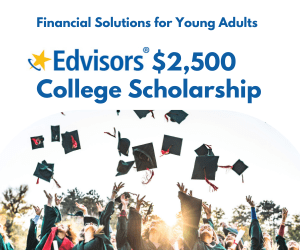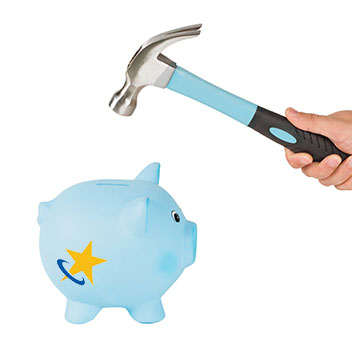If you’re unsure about student loan options for your PhD program, this article will shed light on the programs that exist, how they work, and what you can expect when it’s time to repay.
Financial Aid
Financial aid for a PhD program can include school sponsored grants, scholarships, federal work study, and federal loans. You will need to submit the Free Application for Federal Student Aid (FAFSA) online to determine your eligibility.
Federal Student Loans
As a PhD student, here are the most important things you need to know about federal student loans:
- You no longer qualify for Direct Subsidized Loans at the graduate/professional level; every loan will be unsubsidized
- You must maintain at least half-time enrollment status
Graduate Student Loans
Graduate and professional students may borrow Direct Unsubsidized Loans. The annual loan limit is $20,500 and the lifetime borrowing limit is $138,500. The lifetime limit includes your prior undergraduate loans.
Private Loans
If you have funding gaps, private loans can be a great solution. Private student loans are based on your credit history. Applying with a creditworthy cosigner can help you qualify for the loan and possibly lower your interest rate.
%%Graduate Student Loans%%Grace Period
A grace period postpones full payments of principal and interest until after you complete your program. This is standard for both federal and private loans. Federal loans have a 6-month grace period whereas private loan grace periods may last up to 9 months, depending on the lender.
Interest Rate
The interest rate you’ll pay is based on the type of loan you borrow for your PhD program. Federal loans offer fixed interest rates whereas private loans are either fixed or variable. Here’s a quick comparison of federal and private student loan rates.
| (Federal) Direct Unsubsidized Loan | Private Student Loan |
|---|---|
| 7.94 | Range: 3%-17% |
| For loans disbursed July 1, 2025 to June 30, 2026 | Varies based on creditworthiness and choice of fixed or variable rate |
Subject to Credit Approval
Since private student loans are subject to credit approval, you need to be aware of your credit profile before applying. Most private lenders will use your FICO® Score, and they also look at debt-to-income ratio (meaning your ability to repay). Knowing where you stand can help eliminate surprises and determine if you should bring a cosigner to the table.
Credit Scores
The FICO® Score is still the most widely used credit score among private student loan lenders. You can obtain a free copy of your credit report at AnnualCreditReport.com. Federal law allows you to download a free copy of your report every 12 months from each of the credit reporting agencies: Equifax, Experian, and TransUnion. Note: you may not see an actual score in your report, but you will be able to confirm (or dispute) the transactions that appear.
Apply with a Creditworthy Cosigner
Applying for a private student loan with a creditworthy cosigner is a smart move. According to Sallie Mae , borrowers with cosigners were 5x more likely to get approved for a loan. As an independent PhD student, one concern may be keeping a cosigner on the hook. Don’t worry, most lenders offer a cosigner release option after a series of on-time monthly payments.
Repayment Options and Repayment Plans
Whether you borrow federal or private student loans—or a combination of both—there are multiple repayment options you can choose from. From the time you apply for a loan, you’ll need to decide if you will make payments while you are in school or defer payments until you’ve graduated. When you have completed your program, you’ll have more decisions to make when it comes to repayment plans.
Deferred Repayment
Your federal student loans (Direct Unsubsidized Loans) have automatic deferred repayment. This means payments are postponed while you are in school and during your 6-month grace period. If you borrow private student loans, your lender will ask if you prefer to defer repayment while you are in school or pay as you go.
Payments While in School
If you can make payments while you’re in school, go for it. It could potentially save you thousands of dollars in interest fees. Many PhD students cannot pay a full monthly payment. But even if you can only pay the interest that accrues, that will prevent a significant amount of money from being added to your principal balance once you’ve completed your program. Pro tip: PhD students can take on side gigs such as tutoring or teaching assistance to help cover living expenses.
Interest Only
Interest only payments can be set up with your lender. This is a common option for private student loans. Your lender will ask if you (or your cosigner) want to pay the interest that accrues each month. They can set up a payment schedule for you. You can make voluntary interest only payments on your federal loans, as well. But you should pay attention to the loans with the highest interest rates first.
Full Principal and Interest Payments
When you enter repayment on your loans, you will be scheduled for a full payment amount that covers principal and interest. This comes after your grace period has expired. Keep in mind that there are no prepayment penalties on your federal or private student loans. So if you can pay more than the scheduled principal and interest payment, you could pay off your loan faster and save money along the way.
Income Driven Repayment
Income Driven Repayment (IDR) plans are available in the federal student loan program. There are different forms of IDR plans: Pay As You Earn (PAYE), Income Based Repayment (IBR), and Income Contingent Repayment (ICR). The plan you may qualify for depends on your income and circumstances.
Loan Forgiveness
Loan forgiveness programs can be a lifesaver if you meet certain criteria. The federal student loan program has limited plans, and there may be some externally sponsored programs available.
Federal Student Loan Forgiveness
You may have heard of Public Service Loan Forgiveness (PSLF) or Teacher Loan Forgiveness. These are the 2 most common federal student loan forgiveness programs that PhD students may want to explore. There are qualifying criteria and minimum service periods you must meet to qualify.
NHSC Substance Use Disorder Workforce Loan Repayment Program
The National Health Service Corps (NHSC) offers a number of loan repayment programs. If your PhD falls into the category of psychiatrist, health service psychologist, or a related specialty, you may be eligible for up to $80,000 in loan repayment assistance. There is a 3-year service obligation for this program.
NHSC Rural Community Loan Repayment Program
Another program offered by the National Health Service Corps (NHSC) is a rural community loan repayment plan aimed at combating the opioid epidemic in the nation’s rural communities. This NHSC program has a Spanish-language proficiency enhancement where individuals could receive up to $105,000 in student loan repayment assistance.
Employer Student Loan Repayment
More employers are expanding their benefits to include student loan repayment assistance, in addition to tuition assistance. As you begin your job search, this may become an important factor. Right now, current U.S. law allows employers to annually contribute up to $5,250 per employee toward student loan repayment without it being counted as taxable wages.







